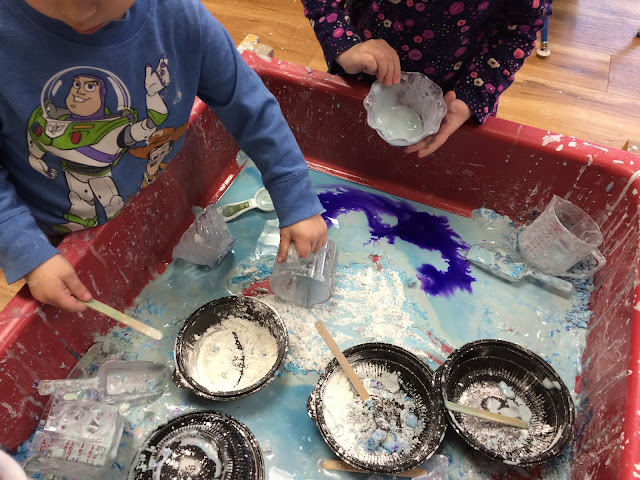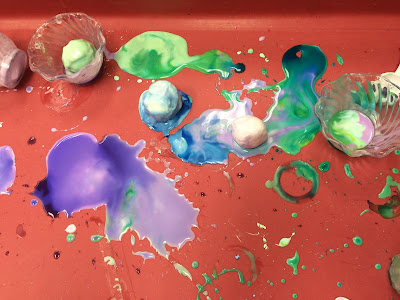I’ve always felt that sensory table play should have
materials that suggest different purposeful things that children can do with them. Scooping, filling, and dumping is
interesting at first, but once children master these skills and simple
materials, they tend to get bored with water or sand play. Or, if they can’t
easily find a goal oriented task with these materials, they sometimes create
their own goals – which might not always be ones that the teacher is
comfortable with.
I colored the water a deep blue, and added large plastic buttons and counting bears. The colors provided a vivid contrast, and as an added bonus, the plastic buttons floated on the water.
The children gathered objects, sometimes naming the
colors, or, in the case of the buttons, the shapes. Some tried to balance bears
on floating buttons. One child noticed that blowing on the buttons pushed them
across the water.
The next day I tried this with black water and
different objects – thick poker chips and rocks. The children showed almost no
interest in the rocks. The poker chips, like the large buttons, became objects
to hide under the water, scoop out, and stack.
The conversation turned to how the different objects looked under the water, and what else we could hide in the water next time.
The conversation turned to how the different objects looked under the water, and what else we could hide in the water next time.































